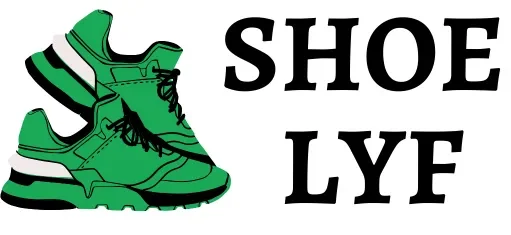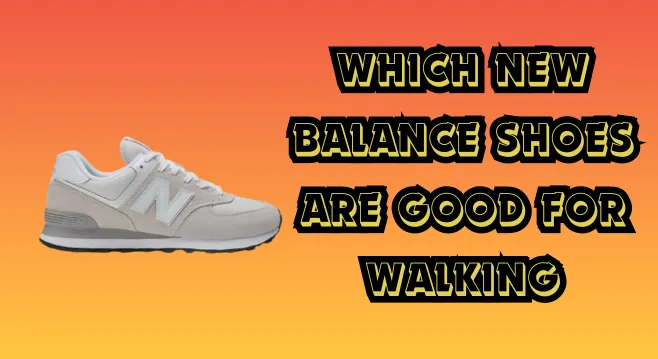What to Look For in a Great Walking Shoe
Before we get into specific New Balance models, it’s important we’re all on the same page about what defines an excellent walking shoe. While some general sneakers can work in a pinch, dedicated walking shoes have very particular design elements that set them apart:
Midsole Cushioning
One of the biggest differences is the cushioning level, especially in the midsole area. Since walking racks up mega impact miles, you need adequate shock absorption and padding to prevent conditions like plantar fasciitis. Look for thick EVA or polyurethane foam midsoles.
Outsole Traction
The outsole tread pattern is another key factor. You’ll want grippier rubber outsoles with pronounced lugs to bite into different surfaces – whether that’s roads, dirt trails, wet conditions, etc. Slip resistance is crucial for steady footing.
Heel-to-Toe Transition
Walkers need a smooth, stable heel-to-toe transition to accommodate that rolling heel strike motion. A rocker-style curve or bevel in the outsole facilitates this natural gait cycle. It prevents stumbling and excessive stress.
Upper Support & Breathability
The upper material of the shoe should provide enough structure and support to keep your feet locked in. But it also needs ample breathability to expel sweat and prevent overheating or blisters from friction.
Wide Toe Box
Many walkers find a nice wide toe box is important for comfort and preventing cramping or bunions from developing over time and mileage. It allows your toes to splay out naturally while pounding the pavement.
A Firm(ish) Foundation
While plenty of cushion is needed, walking shoes shouldn’t be overly soft either. You’ll want sturdy underfoot support for steadiness over long distances. Look for shoes with a firmer midsole or insole board underfoot.
Lightweight & Flexible
Finally, you want walking shoes to be as lightweight and flexible as possible without compromising the other features. Heavy or rigid shoes will just weigh you down and fatigue your feet prematurely.
Top New Balance Walking Shoe Options
New Balance covers pretty much every category and budget when it comes to high-performance walking shoes. Here’s a quick overview of some of their best options for different walking styles:
For Road Walking & Light Trails
If your walking tends to be on paved surfaces like city sidewalks or light trails, shoes like the New Balance 847v4 and 928v3 are excellent choices. Both have thick Rollbar support, durable outsoles, and ample cushioning – plus an affordable $60-100 price range. The Fresh Foam X line is another nice option for everyday road walking.
For Long-Distance Walking
Need maximum cushion and support for serious mileage? Check out New Balance’s Creek walking lineup. The 1350v2 and 1540v3, in particular, have tons of underfoot Fresh Foam X cushioning paired with a sturdy plastic midfoot wrap. They also have Vibram outsoles for superior grip on all surfaces. Expect to spend $100-150 on these premium walkers.
For Trail Trekking
Many of New Balance’s trail running shoes also make superb walking kicks for light hiking and trekking off-road. The Fresh Foam Hierro v6 and Arishi Trail are two affordable ($70-90) options with aggressive Vibram traction lugs and breathable mesh uppers. For tougher terrain, look into their burlier hiking boots and trail models.
For Travel & Touring
Doing lots of stop-and-go urban walking on concrete while traveling or sightseeing? Opt for something lightweight yet supportive like the 847 or 877 Walking Shoes. Their flexible Fresh Foam midsoles and REVlite cushioning provides responsive comfort without weighing you down. A great $60-100 option.
For Work & Standing
Working on your feet all day can utterly thrash your legs and feet without proper shoe support. Enter shoes like the New Balance 928v3 and 1540v3 – offering top-tier cushioning, stability and motion control in a non-slip package. Pay closer to $100-150 for these walking workhorses.
For High Arches & Overpronation
Walkers with high arches or excessive pronation will find relief in New Balance’s Motion Control shoes like the 1540v3. They have deep, stabilizing dual-density posts to encourage proper gait cycles and alignment. The Fresh Foam Vongo v5 is another great stability walker.
For Wide or Narrow Widths
One huge advantage of New Balance shoes is their dizzying array of width options, from super narrow to ultra wide (2A to 6E widths!). This allows you to get a near-custom fit in shoes like the Fresh Foam 1365, 1080v12, 847v4, and many more. Say goodbye to cramped toe boxes!
Tips for Finding Your Perfect Fit
Now that you’ve got an overview of some top New Balance walking shoe contenders, how do you ensure you’re getting that elusive “perfect fit”? Here are some pro tips:
Get Fitted at a Running Store
For starters, don’t just blindly purchase shoes online or at big box stores. Instead, visit a specialty running shop to get properly fitted by trained experts. The staff will examine your gait, arches, stride, etc. and narrow down the best options for your feet and biomechanics.
Try on Multiple Sizes and Widths
Don’t assume you know your size across all shoes – it can vary significantly between brands and models. Start by trying on multiple adjacent sizes and widths to find that snug-yet-comfortable Goldilocks fit. Leave about a thumb’s width of wiggle room in the toe box.
Walk Around In-Store
Don’t just stand around – walk, jog, jump, and move around in any potential shoe options. Assess for heel slippage, forefoot feel, support under the arches, and toe box roominess. Make sure they feel great from all angles.
Lace them Properly
Lacing technique matters for optimal fit and comfort. Make sure shoes are laced comfortably snug without overdoing it. The lacing holes should allow for customization and fine-tuning the fit around your foot shape.
Bring Your Orthotics
If you use custom orthotics or insoles, bring those with you, so you can test out how they integrate with the cushioning and deep fit of different walking shoe contenders.
Consider Going Up 1/2 Size
Many walkers find going up a 1/2 size allows for some extra room for foot swelling over longer distances. It reduces the “cramped toe” feeling. Just make sure there’s no heel slippage when laced tight.
So there you have it, folks – detailed insight into finding your ideal New Balance walking shoe. Just remember that proper fit, comfort, and alignment should be the top priorities over anything else. Don’t settle until you find that footwear unicorn!
FAQs About New Balance Walking Shoes
To wrap up, here are a few frequently asked questions about using New Balance for walking:
How long do New Balance walking shoes typically last?
With regular walking use and proper rotation, you can typically expect 300-500 miles out of a quality pair of New Balance walking shoes before the cushioning and support breaks down. But listen to your body – if foot pain develops sooner, it’s time for new shoes.
Do New Balance make trail walking shoes?
Yes, while New Balance is best known for their road walking and running shoes, they do offer several trail-specific walking shoe models. The Fresh Foam Hierro and Arishi lines have beefed up traction and protection for venturing off pavement.
What New Balance shoes are best for walking and standing all day?
For spending long hours on your feet, look for maximum cushioning and motion control. Top choices include the New Balance 928v3, 1540v3, and Vongo v5 stability walkers.
Do New Balance walking shoes come in wide or narrow widths?
Absolutely! New Balance is renowned for offering a huge range of widths, from ultra-narrow (2A) to super wide (6E and beyond). This allows for a customized, comfortable fit.
How can I get properly fitted for New Balance walking shoes?
Visit a specialty running or walking store, not a big box retailer. The staff can analyze your gait and fit you for the perfect NB walking shoe style, size and width. Bring any orthotics too.

